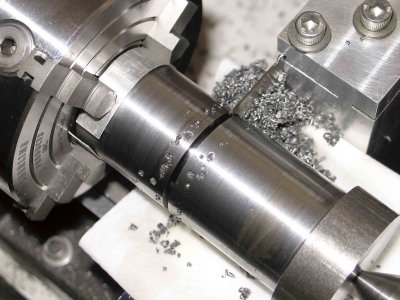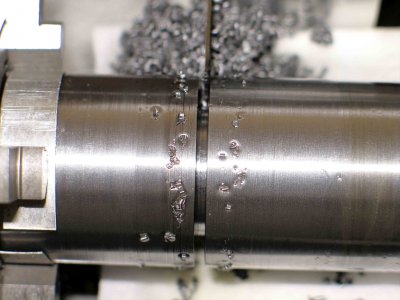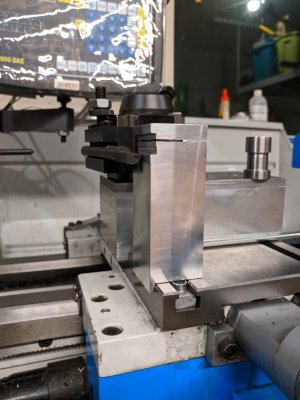- Joined
- Jul 19, 2013
- Messages
- 590
The tool is mounted on the back of the work, upside down. The forces and flex are different and seem less prone to chatter and catching. Gravity helps evacuate chips. The is less flex as it is generally a solid mount, no compound or QCTP flex.
Here's a photo of mine.
View attachment 304089
Too much stick-out for this operation.
I part on the normal side of the machine and prefer the 3/32" HSS parting tool over the 1/8" carbide inserted one, even in stainless steel.




 I prefer to use the bandsaw when I can.
I prefer to use the bandsaw when I can.